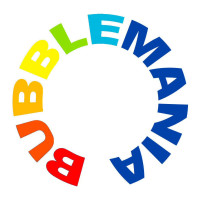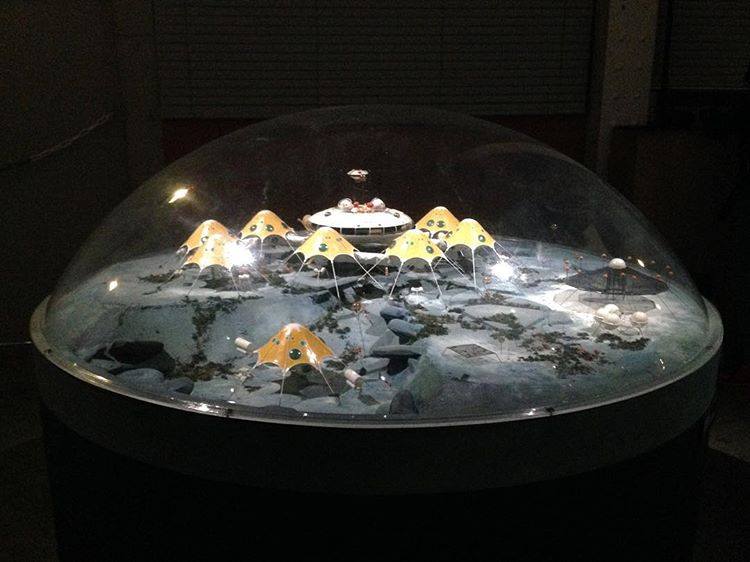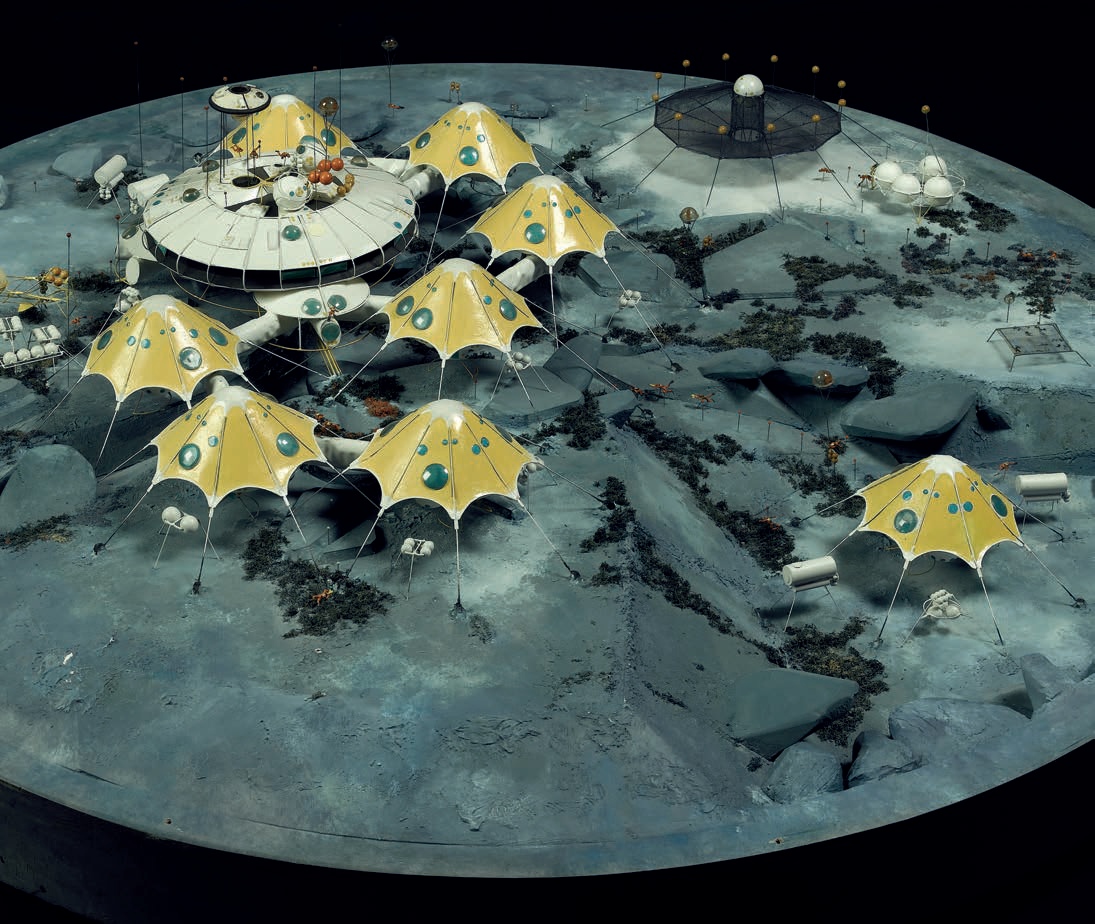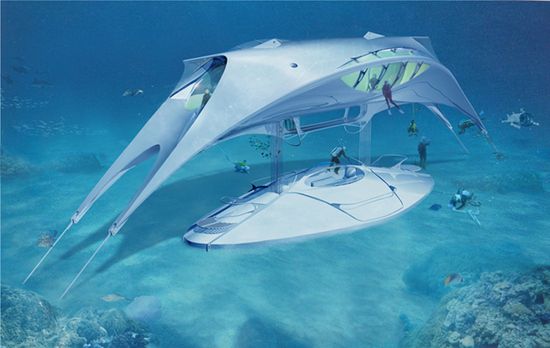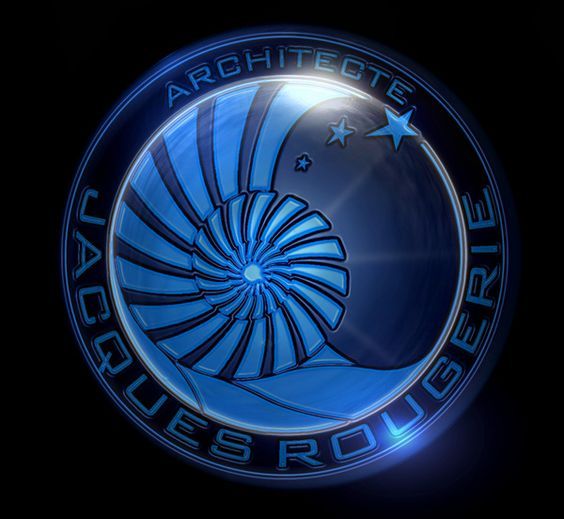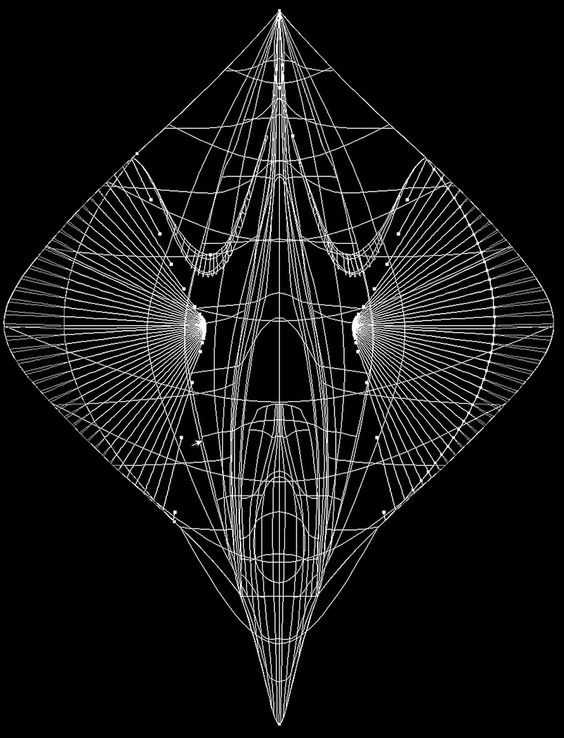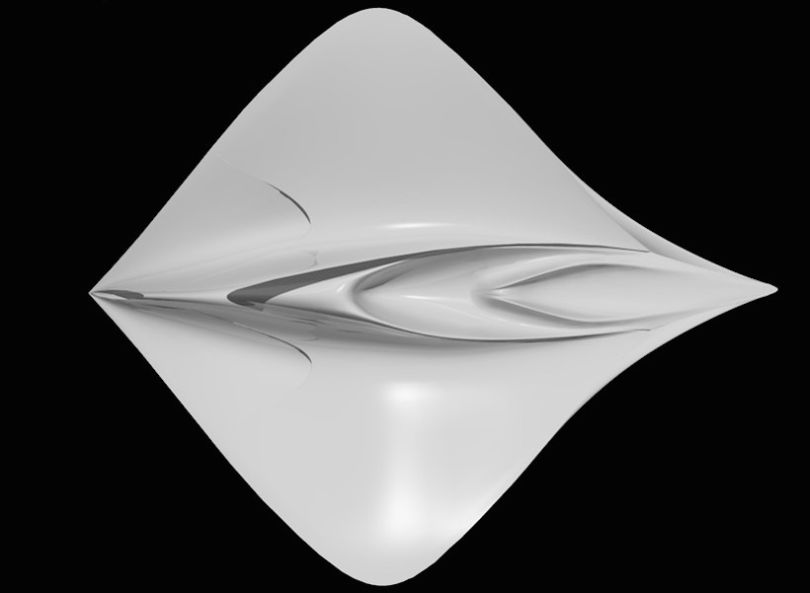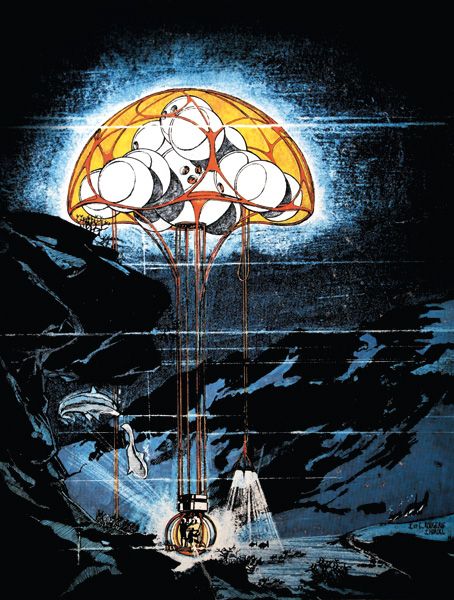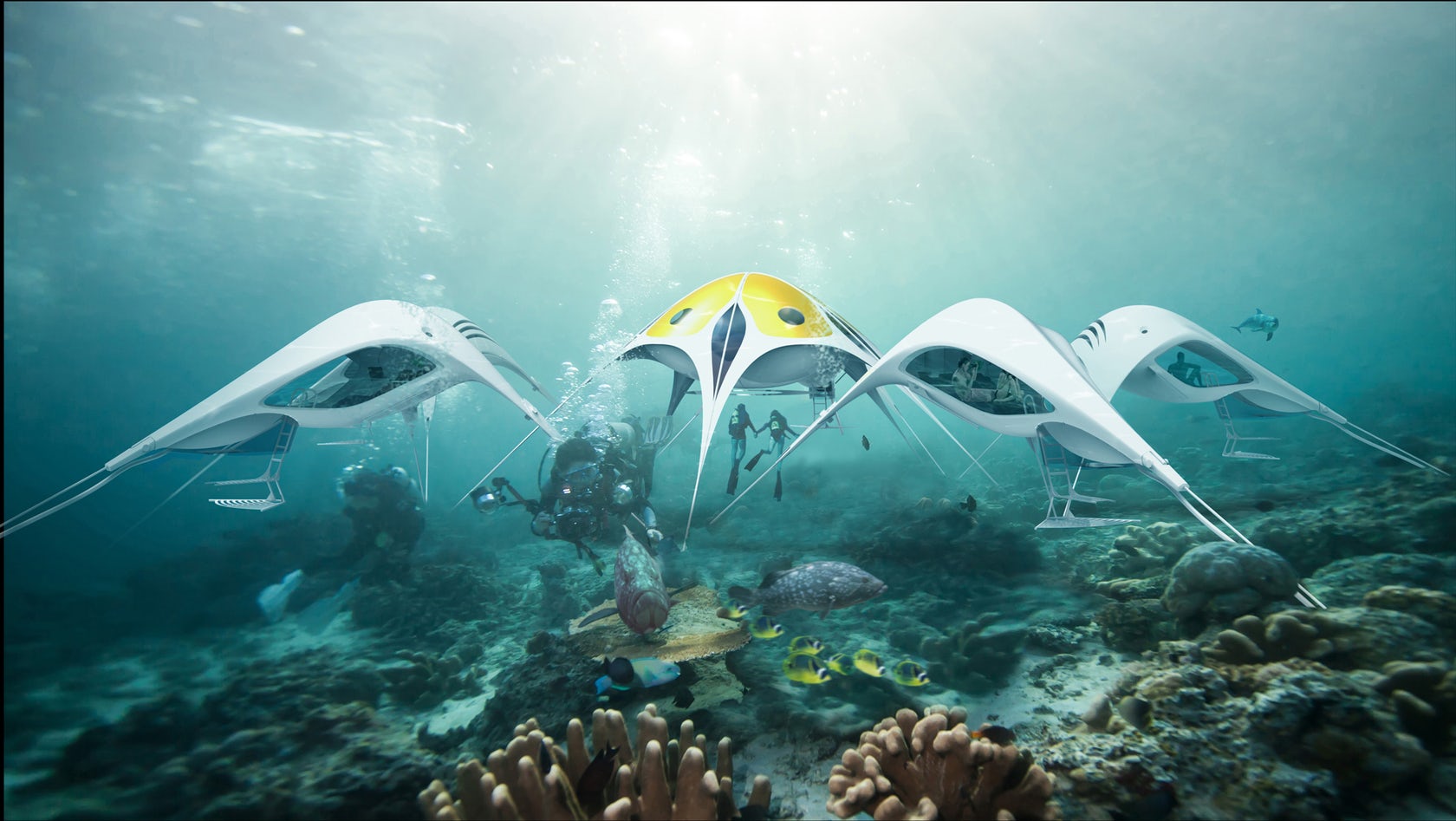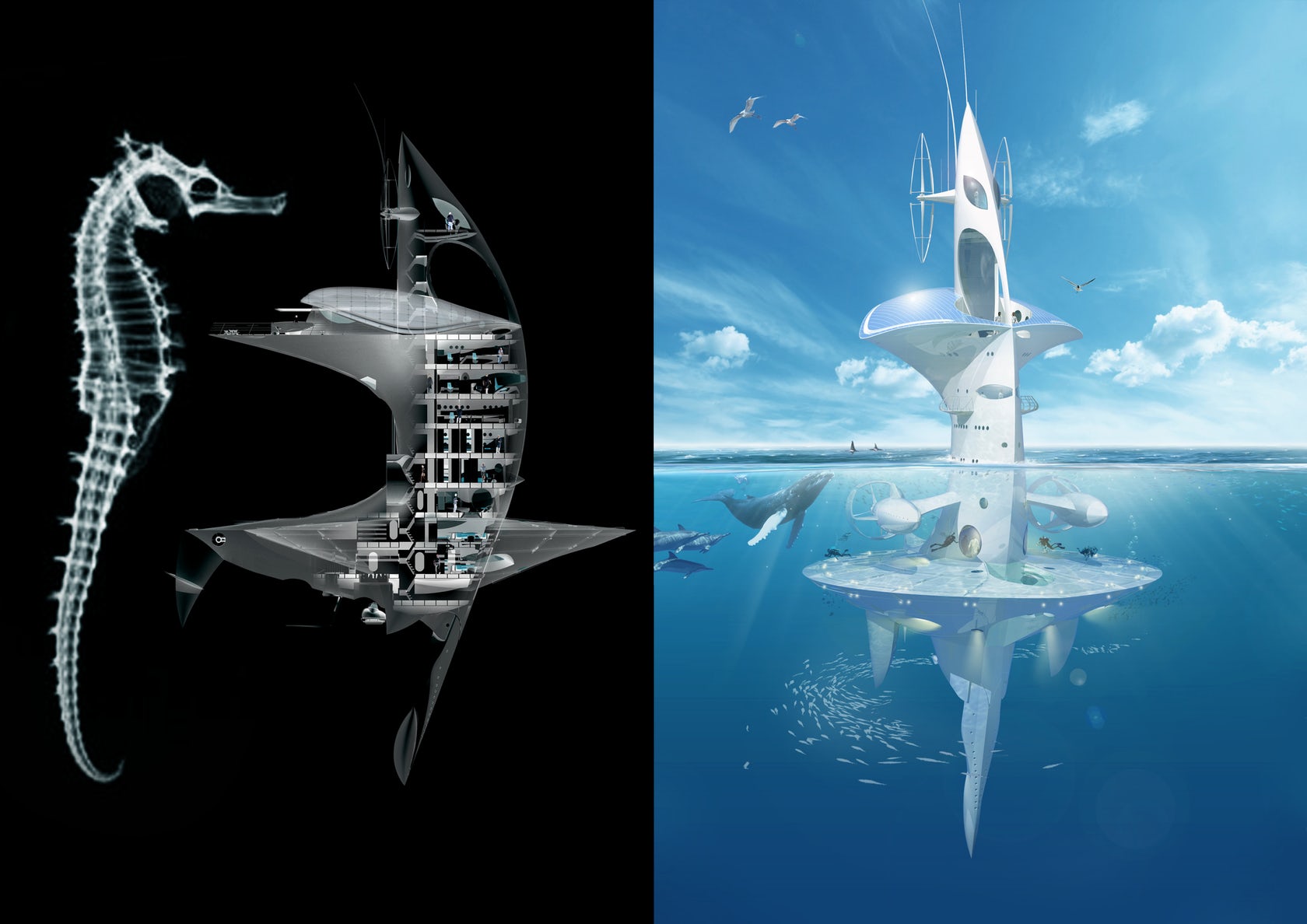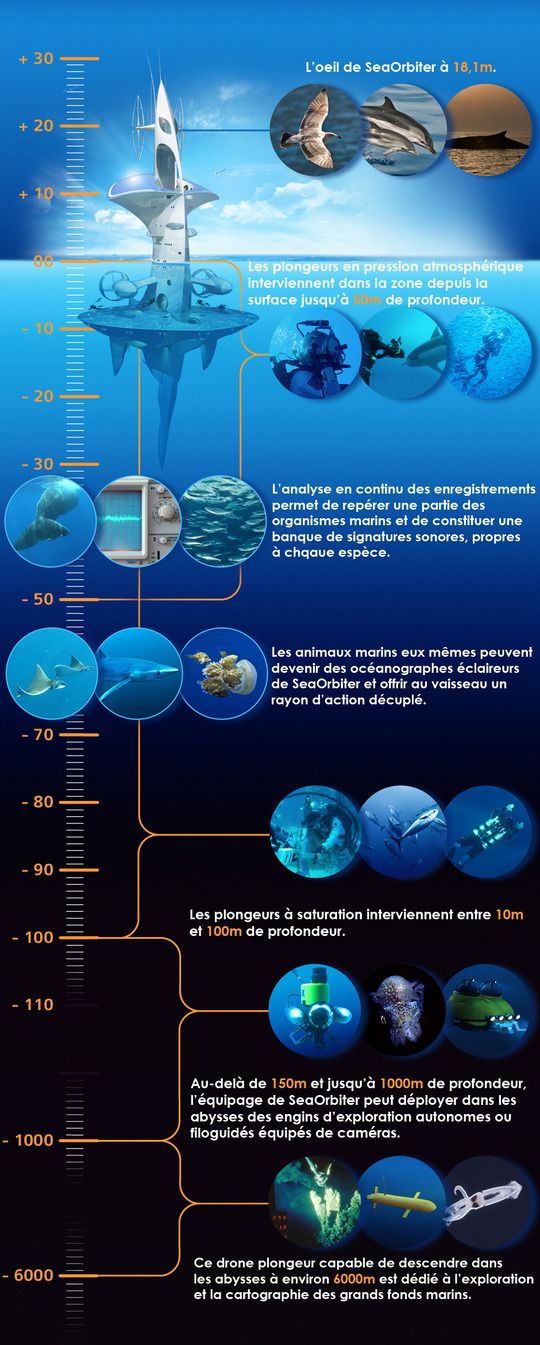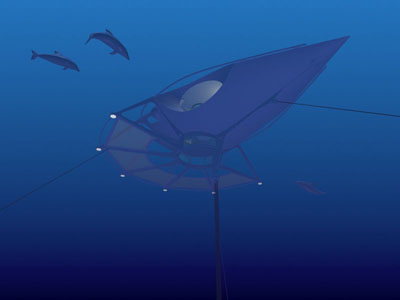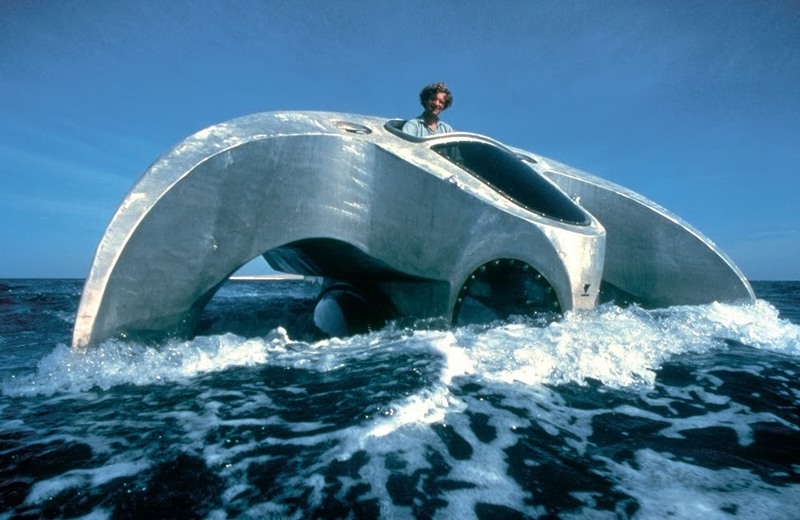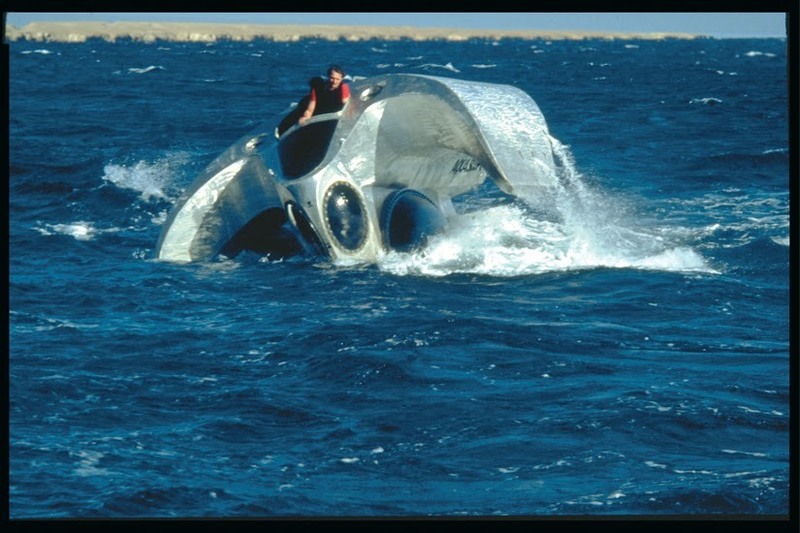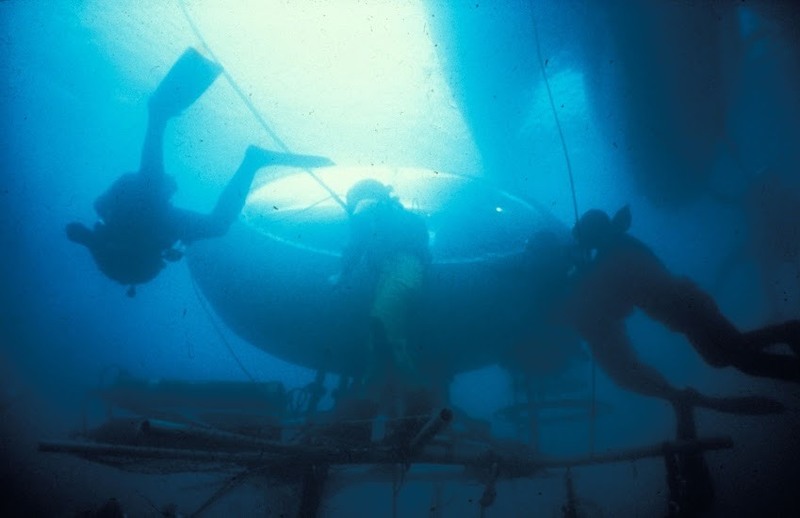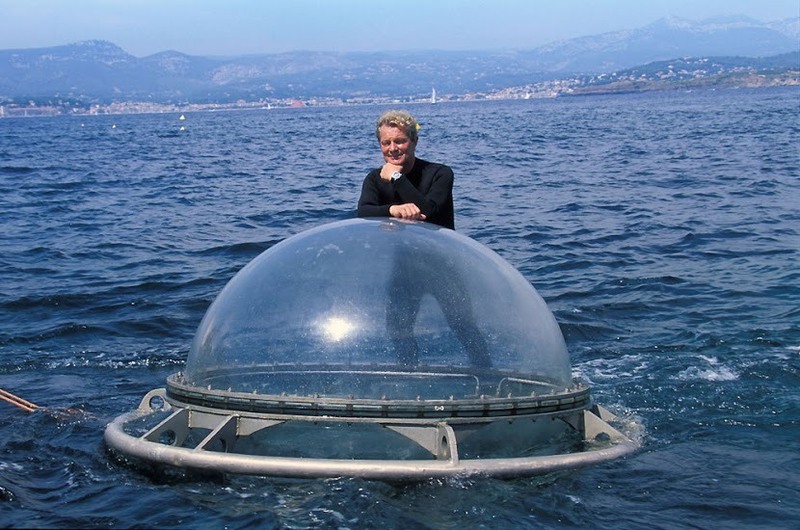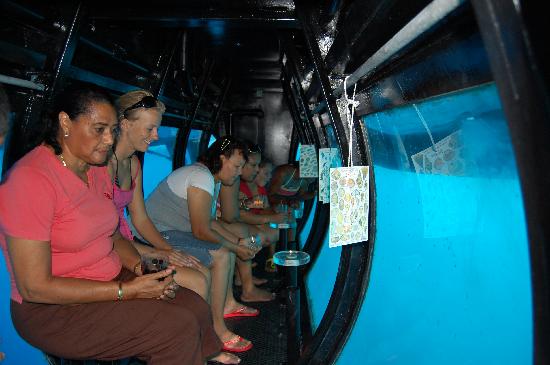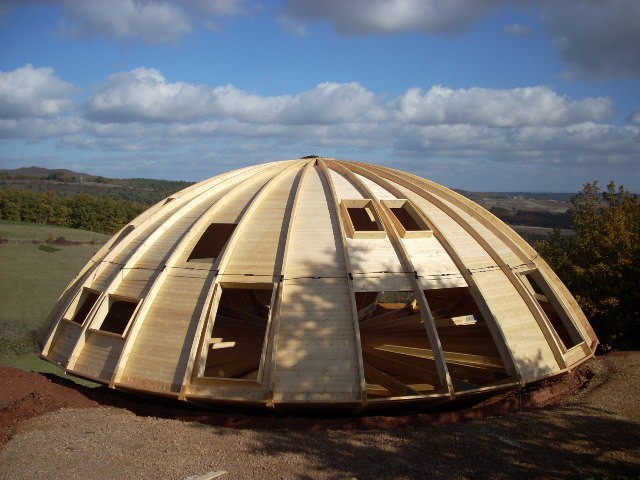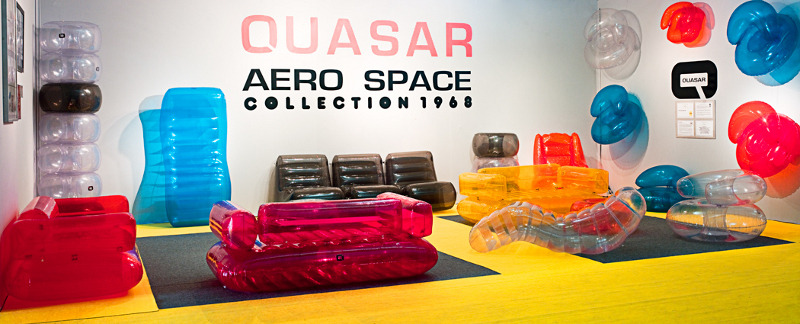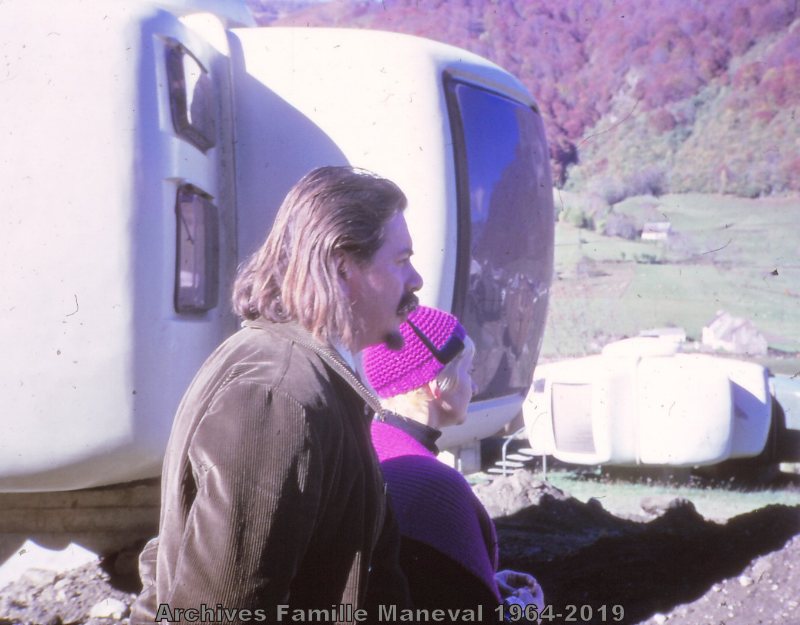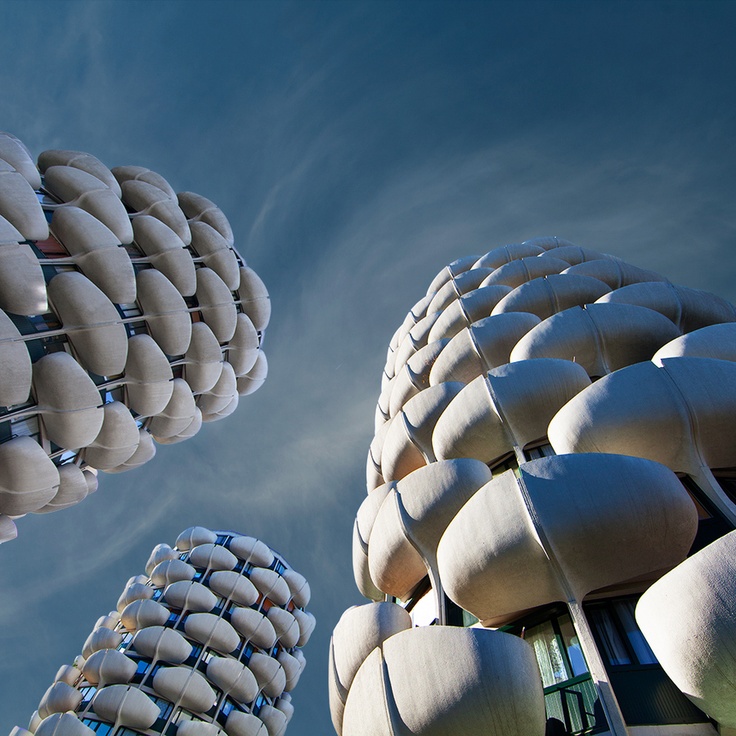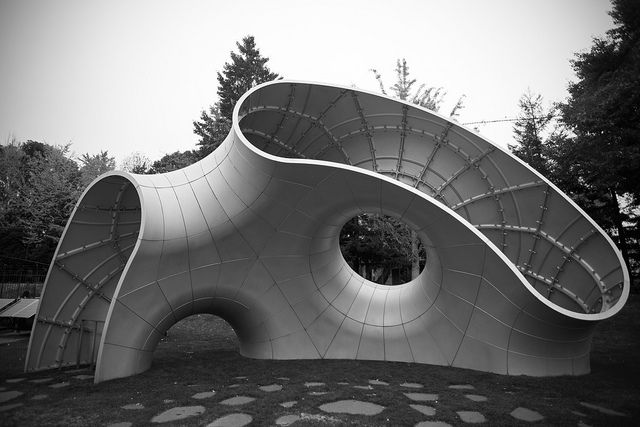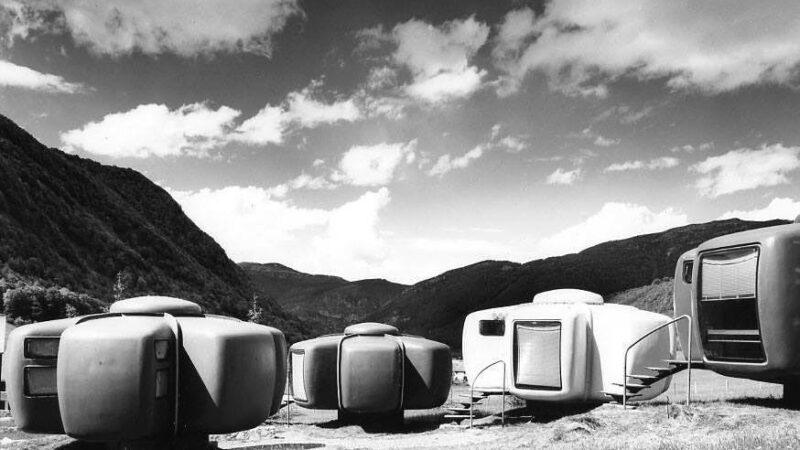Jacques Rougerie Architect, Underwater habitat
The underwater habitat of
Jacques Rougerie
Jacques Rougerie – Underwater Village, 1973 © Jacques Rougerie Architect
The goal of any diver enthusiast is to stay as long as possible under water. In forty years, technology and knowledge of diving have evolved considerably. From simple bell to the underwater habitat, traverse this fabulous story that leads us to the gates of a new colonization.
scientific prowess Jacques Rougerie, born in 1945 in Paris, is an architect French oceanographer. underwater habitat specialist, it is the source of projects for exploration and colonization oceans and designs its first concepts of underwater habitats in the early years 1970.
3 various methods :
Three types of underwater habitat
Those which operate on the principle of the bell : they provide access to the sea by a direct opening. Those sealed and pressurized as hyperbaric chambers and allow divers to live in depth. It must pass through an airlock to reach the sea. Those directly connected to the surface.
some structures, Floating or grounded, sink under the sea, allowing for underwater viewing to the general public. For obvious reasons this latter case is the most common. The underwater habitat, a bell of history The first method that comes to mind is the bell: if we immerse a glass back straight, it retains a pressurized air pocket, thus providing a potential shelter.
This is the principle on which were built the first underwater habitats such as Diogenes project Cousteau and Alinat : in 1962, two divers live one week a ten meters in these cylinders directly open sea.
The idea appeals : other "houses" are thus constructed in various parts of the world and the success of these habitats leads Cousteau to develop his project 1963 to install a real small colony in the Red Sea : Précontinent II, consisting of a large house in the shape of starfish, a shed, an aquarium, a garage for the diving saucer piloted by Falco "Man triton".
Behind the windows, we see the Aquanauts chat, play chess or listening to music, contemplating the underwater world. They even brought with them Claude, their parrot, that must be the first bird to have lived one month per ten meters of water.
Over the years 1960-1970, diverse and varied underwater habitat will emerge:
Sealab (Bermuda, USA), operation Legacy (Bahamas, USA), Précontinent III (Cap-Ferrat, France), Glaucus (Bournemouth, Britain), Chernomor (USSR), Meduza (Poland), Hydrolab (Florida, USA), Tektite (Virgin Islands, USA), Aegir (Hawaii, USA), La Chalupa (Porto Rico, USA), Helgoland (Baltic, Germany), Neritica (Red Sea, Israel), Robinsud (Ustica, Italy), Galathée (Friuli, France), etc.
Jacques Rougerie six dates :
July 1945 : birth to Paris. The family share Rougerie then live in Africa for ten years
May 1956 : theatrical release of World of Silence, Cousteau documentary.
August 1977 : Launching of Galatea, her first “House” Underwater
August 1985 : crosses the Atlantic on its Aquaspace to transparent shell.
Mars 1999 : launches the Sea Orbiter project, observation ship and underwater exploration
June 2009 : entrance to the Institut de France, Acadamy of Arts, section architecture
Green before time, he fed dives Jacques Cousteau and shipments of Theodore Monod, he had the chance to meet a young age thanks to his father, professor of biogeography.
A l’adolescence, Jacques Rougerie is as interested in the conquest of space at the ocean. “You have to see the context, he recalls. The Silent World, Cousteau's film, got the Golden Palm at Cannes 1956. Four years later, Jacques Picard descended over 10 000 meters explore the Mariana Trench in submarine. Then it's Neil Armstrong and Buzz Aldrin walking on the moon in 1969.” Student, he began a double degree : architecture and oceanography. Young graduate, he draws “farms where the whales trairait”.
A small provocation, says he today. “I wanted that operates marine resources other than killing wildlife, and I was already convinced that in partnership with industry we will come to save our planet.” In his speech academician, He stressed the urgency of protecting the oceans, “so that future generations can enjoy”. Few weeks later, he used his new immortal status to create a foundation to educate children about the sea. “I hope they will want to explore our oceans, which remain largely unknown. I am confident that the Sea Orbiter will enchant the young generation as the beginnings of space exploration and marine made me dream. They will then want to create new energy or become veterinarians fish.” The meriens will soon disembark.
Sea Orbiter: Observe the seabed continuous and long-term.
The Sea Orbiter opens a new era in the exploration of the seabed. Commeune carved giant sail, top 51 meters, dont 31 submerged, its vertical profile allow it to remain stable even in the open sea off ? where traditional ships are tossed. Six crew members and twelve “guest” (scientists, technicians, etc…) répartirontsur are nine bridges : four and five surface under the waterline. Large windows and measuring devices will observe the seabed continuously for long periods to study climate-related parameters, marine biodiversity, at the interface between the ocean and atmosphere… The data obtained will be processed on board. In its most profound basis of life, at 12 meters under the waves, Sea Orbiter will also host the astronauts to exercise simulating long trips in pressurized cabin, the pressure and stress of weightlessness are similar to the seabed and space. The first mission, scheduled for 2011, should be a long drift in the waters of the Gulf Stream, to evaluate the influence of ocean currents on climate change.
Jacques Rougerie of the moon at sea
the complex structure shows different forms of construction.
(Image: Jacques Rougerie Architecture)
Climb aboard the Research Center Floating Futuristic Manta Ray Inspired
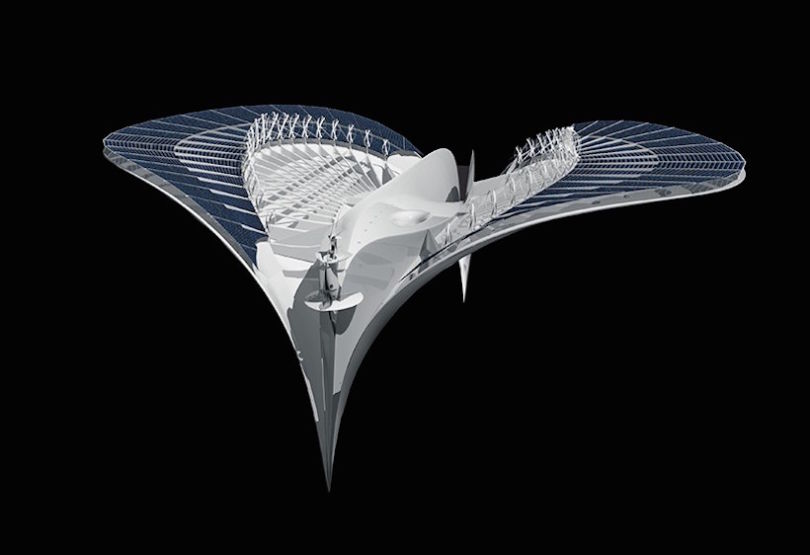 (Image: Jacques Rougerie Architecture)
(Image: Jacques Rougerie Architecture)
the floating city will accommodate different ships within:
fully autonomous thanks to the use of marine renewable energy, and respecting the principles of sustainable development with its zero waste program, the city of “meriens “is designed to integrate the farms of’ reproduction of aquaculture on both sides of the driveway of his inner lagoon, and hydroponic greenhouses at the ends of its wings. at a height of 60 meters – but the lowest level at least 120 meters deep – it could accommodate up 7000 people on many levels, including conference rooms, classroom, laboratory, living spaces, cultural relaxation and sports areas.
It is often said that we know less about the oceans than on deep space.
A futuristic research center was unveiled to help change that. Designed by’ architect Jacques Rougerie,
the manta ray-inspired structure will float an international oceanographic university in the ocean.
The ambitious project is presented as a floating science city would be dedicated to the observation and analysis of marine biodiversity.
Covering a total length of 900 meters and a width of 500 meters, mobile city can accommodate state research vessels of art in its interior lagoon, as well as university teams, researchers and technicians.This may seem like something you're more likely to find an episode of Star Trek, especially given the City ” Meriens” is fully autonomous thanks to the use of renewable marine energy.
It will use sustainable development and a zero waste program to integrate aquaculture fish farms on both sides of the inner lagoon access channel, and hydroponiques.Il greenhouses could accommodate up 7000 people on many levels, including facilities such as conference rooms, classroom, laboratory, living spaces, leisure and sports areas.
It will take some time before the City ” Meriens ” is looking for passengers, but on paper, its incredible design is as inspiring as the animal, it was designed after.

Ville de Meriens. Manta Ray organic ship.
This is the Manta Ray ship or the town of Meria. It is a floating city that can hold up 7.000 scientists for the study and development of new technologies.
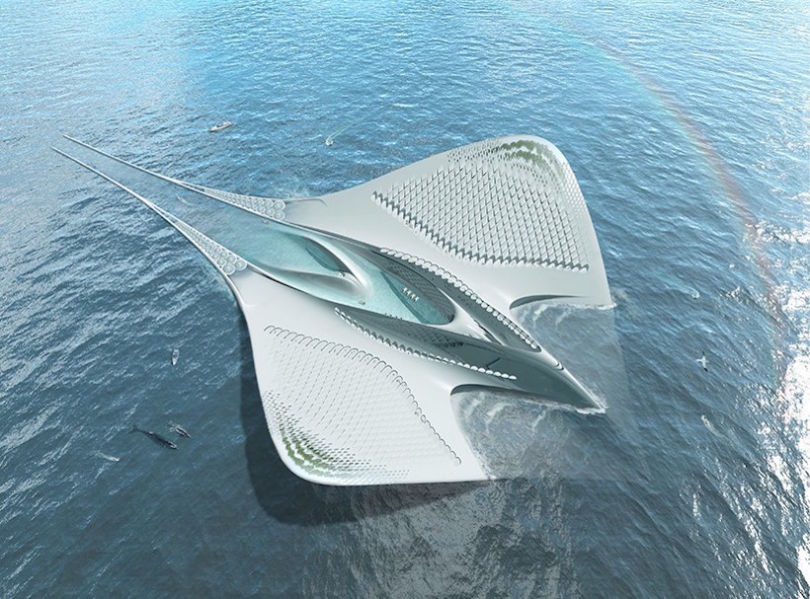 (Image: Jacques Rougerie Architecture)
(Image: Jacques Rougerie Architecture)
Jacques Rougerie designed a floating research center influenced by manta rays
City of ” meriens ” Bionic is a concept that is shaped like a real manta created by Jacques Rougerie Architecture. the International Oceanographic university will be adrift in the great ocean currents and are designed to accommodate researchers,teachers and students around the world for very long periods.
” city of meriens ” is designed to be a floating city dedicated to scientific observation and
analysis of marine biodiversity, and is intended to follow the programs developed by the multidisciplinary SeaOrbiter the sentinel network 2050. with a total length of 900 meters and a width of 500 meters, this mobile city sleeps in the interior of its research vessels in the lagoon of different sizes (until 90 meter), and SeaOrbiter who would like a beehive that a number of watercraft and under – marine and air navigation devices would use as a starting point.

The floating research center Jacques Rougerie influenced by manta rays.

FARM UNDERWATER
Habitat-based life designed for future farmers of the Sea
and researchers in marine biology
PROJECT 1973
Client : University of Hawaii - Project Manager : Jacques Rougerie Architect
Materials : Hull reinforced ferro-cement kept in suspension by mooring - Cost : 17 MF
Diameter : 15 m - Depth : -12 m - Capacity : 8/12 pers.
VIRGIN ISLANDS / USA – P-73-51-H
Photo credit :
© Georges Meguerditchian – Centre Pompidou, MNAM-CCI / Distance. RMN-GP
© Jacques Rougerie
Jacques Rougerie (1945 – )
Underwater Village, mass plane and 2 perspective views
1971 – 1973
Ink and adhesive films on tracing
55 x 69,6 cm
Gift of the artist, 2006
Inventory number : AM 2007-2-38
————————————
Ensemble :
Underwater Village, closed, Museum, Pulmo, Deep in Center
1971-1974
This proposed underwater town, studied by Jacques Rougerie in 1973.
For two US research agencies, was to create the basis for a community Aquanauts. Photo credit – Creations Jacques Rougerie
the SeaOrbiter


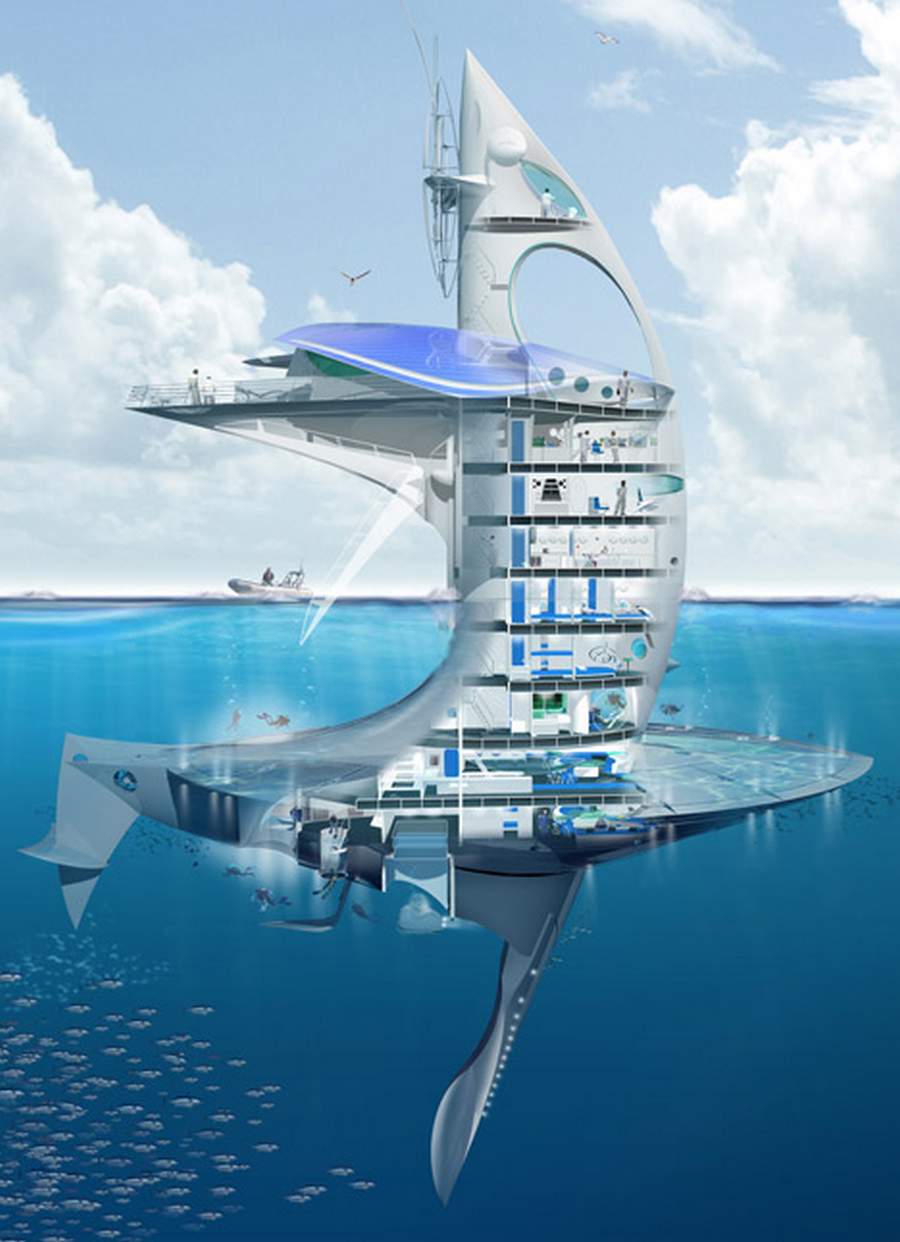 During the last years, Rougerie made a splash with the drawings for his next project, the weird and ambitious SeaOrbiter . A vertical vessel with several stories in both- above and- below the surface, the SeaOrbiter would like a non-stop research station able to travel the seas on long expeditions.
During the last years, Rougerie made a splash with the drawings for his next project, the weird and ambitious SeaOrbiter . A vertical vessel with several stories in both- above and- below the surface, the SeaOrbiter would like a non-stop research station able to travel the seas on long expeditions.
The finished vessel will be capable of supporting up 22 crew both, with laboratories and scientific centers for use in while studying sea life to life sea training. It would also look like something of’ Outer space – atmospheric.

For the time being, the SeaOrbiter is more dream than reality (although the "eye" of the ship was manufactured, So pending its last revolution in life under – marine, lets take a look back at some – Some of the most incredible creations Rougerie who actually hit the waves.
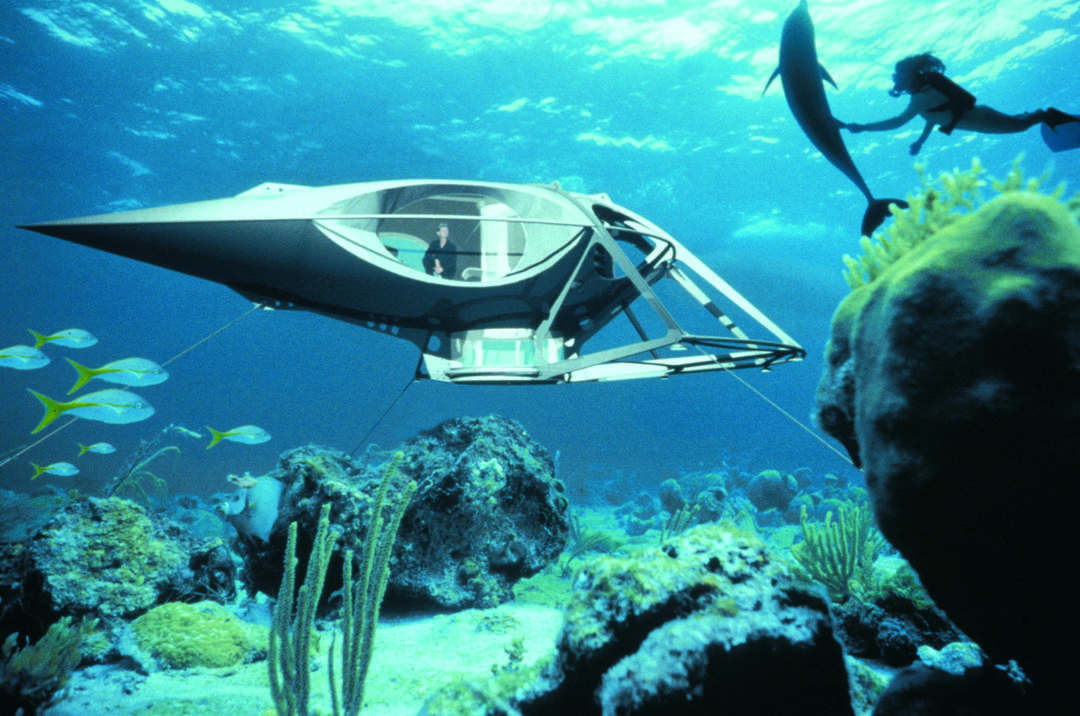 AQUALAB
AQUALAB
Habitat-under laboratory- marine for research
océanopraphique for long-term stays of six months to one year
PROJECT 1993
Client : Space Mountain - Project Manager : Jacques Rougerie Architect
Materials : aluminum shell, berries methacrylate - Cost : 25 MF
Length : 9 m – Volume : 45 m2 - Depth : -12 m - Capacity : 6/9 pers.
COASTAL - R-93-61-H
Aqualab, underwater habitat
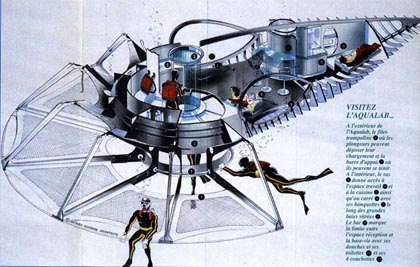

|
3D model created with the software ARC + : Some images from an animation made with 3D Studio :
Aquascopes (1979)
These space-age trimarans have been designed and built not as research vessels, but to allow occasional passengers to observe life under the waves. visualization portals are seated on the sides of the central rib which extends beneath the water, while two sweeping arms outstretched to each side, keeping the container from tipping. Rougerie actually produced 25 these vessels, some of which are still on the water today as tourist vessels.
added 2 apr. 2013
Achievements Jacques Rougerie: underwater habitats and marine centers.
added 28 June 2012
This report describes the history of underwater habitats, Nautilus at SeaOrbiter.
SeaOrbiter is part of the history of the great explorations of the universe, led by illustrious predecessors and great adventurers : Jules Verne, Jacques-Yves Cousteau, Jacques Piccard…

 Hippocampe, an underwater habitat built in 1981.
Hippocampe, an underwater habitat built in 1981.
Women Island, in Mexico
Launched off the coast of Marseille in December 1981 at the exact same place where the first Précontinent the underwater habitat commandant Cousteau 1962, Seahorse I was tested by Jacques Rougerie and Bernard Gardette, Psychologist Comex, during a diving event on the offshore industry. pelagic suspended following the principle of Galathée, the aluminum structure has broad methacrylate "windows" opened under the sea, inserted throughout the aluminum which could accommodate 2 people in saturation conditions within 12 meters for the period 7 at 15 days. After this first experience, Seahorse I joined the Mexican Yucatan under the direction of Armando Ferrat who continued to experiment with the marine life off the coast of Cancun, Women Island, where the ship is now on display.
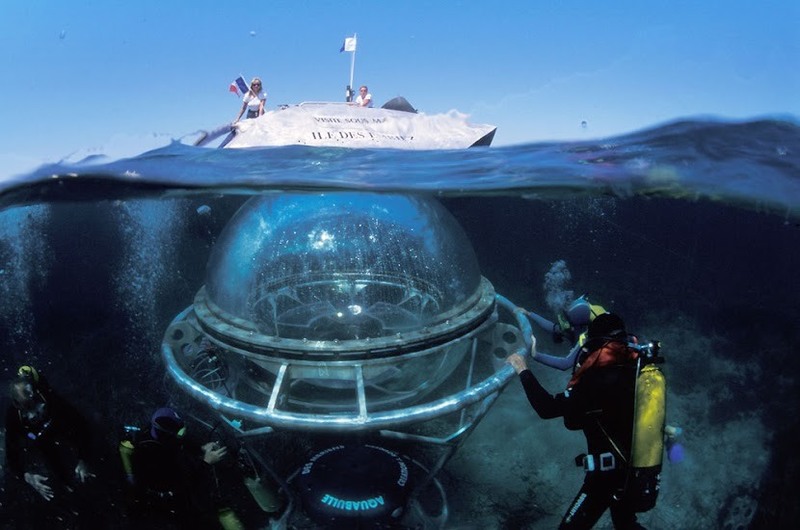
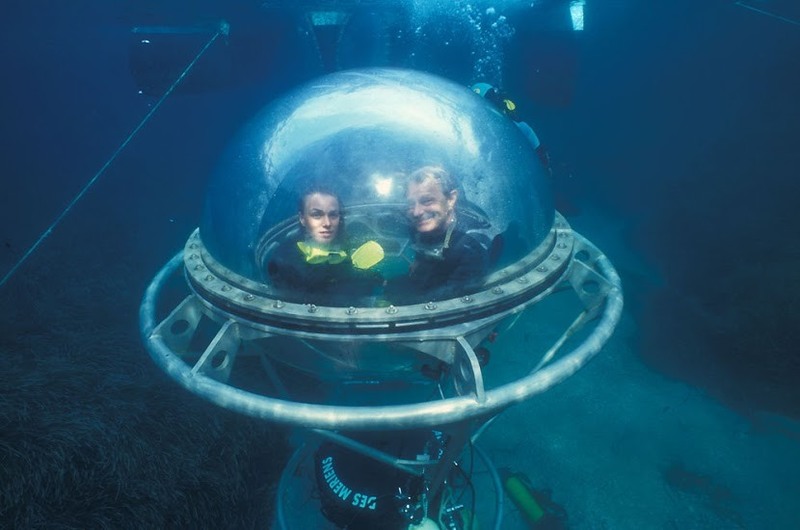
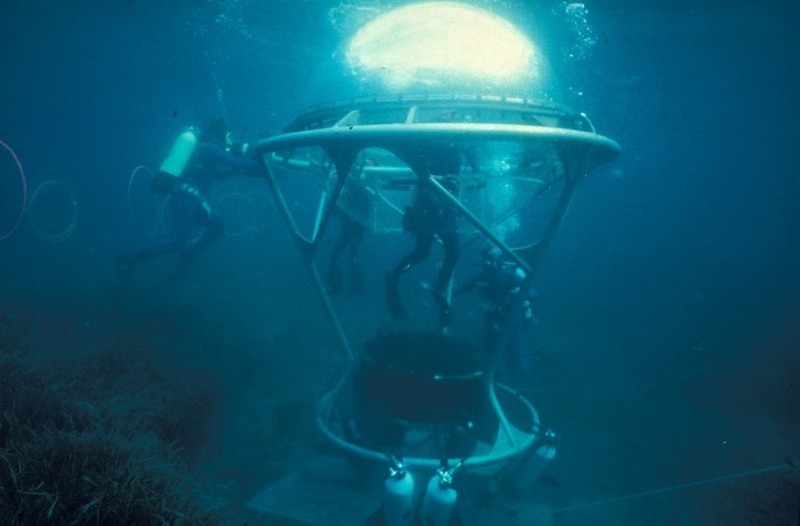 A Aquabulle may also sit at varying levels beneath the surface.
A Aquabulle may also sit at varying levels beneath the surface.
 Aquabulles (1978-1998)
Aquabulles (1978-1998)
One of the most simple designs, the Bubble Popp is a single viewing station which is just over a submersible bubble that holds enough air usable for those inside survive for hours at a time. The main advantage here is that this is essentially a large window. Rougerie first designed the shelter 1978, but a number of scientists employed aquabulles efforts in the years since their creation.
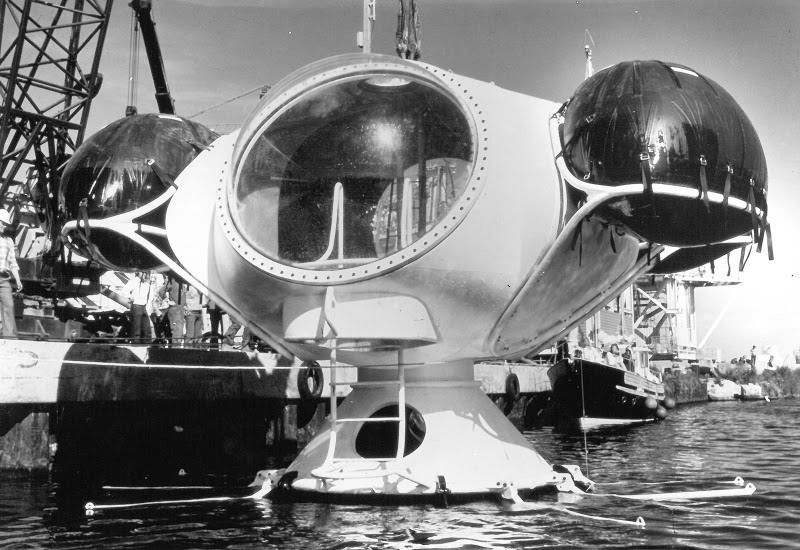 GALATHEE II
GALATHEE II
pressurized habitat designed to serve basic life in
part of an underwater archeology program
PROJECT 1980
Client : MINAMI International. - Project manager : Jacques Architect
Materials : steel structure, six ballasts - Cost : 25 MF
Length : 11,5 m - Width 10,2 m - Weight : 80 t - Capacity : 4/6 pers.
SEA INSIDE / JAPAN - P-80-51-H
Galathée (1977)
first underwater habitat Rougerie was this bulbous ship. Thank you to airbags installed on the sides of the submersible, this shelter submarine could adjust to varying positions under water, which allows the viewing and searching for a number of different sections of the ocean. He also began the leading trend, windows eyes like vision that continue through many creations Rougerie.
Similarly with Galathee, who like many of its habitats like nothing more than an alien spaceship. the use of curvilinear forms Rougerie is elegant art, compared to submarines laboratories built by the governments of the day were generally ugly, Industrial research in steel cylinders.

Rougerie and others sit comfortably within the Galathée.

The Galatea is pulled up from the water.
GALATHEE I
Habitat-semi-mobile laboratory submarine for programs
scientific and technical research
MADE OF PROTOTYPE 1977 ; PROJECT 1976
Client : C. A. M. - Project manager : Jacques Rougerie Architect
Materials : steel hull, methacrylate domes, flexible neoprene fabric ballasts, movable ballast - Cost : 10 MF
Volume : 56 m3 - Depth : -9/-45 m - Capacity : 4/7 pers.
COASTAL - R-76-51-H

Aquaspace sailing and snorkeling trips Bonaire
Aquaspace Bonaire is known for its beautiful sailboats and snorkeling around Bonaire and Klein Bonaire. Bonaire is also a paradise for sailing and snorkeling. The most impressive and beautiful way to discover the underwater world – ocean around the island is by our sailing trips and snorkeling, precisely because our boat may – the most famous being conditioned boat glass bottom in the world. The bottom of the boat is equipped with an under observation – marine, a thick glass bottom, so you can see you without entering the marine life of’ water. With a drink in hand in a refrigerated space turtles, the Dolphins, lobsters, brightly colored fish, watch snails and other creatures that cruise the turquoise waters of the Caribbean, which may be better ?
Our sailing and snorkeling trips by thousands of international visitors on the TripAdvisor site ranked as one of the three best things to do in Bonaire !
 The Aquaspace provides morning and after – lunch breaks, which of course also be provided snacks and drinks. In addition, masks and snorkels and life jackets on board. organizes master Dready legendary parties, and it offers two packages including the days’ accommodation for groups up to eight people. Look for breaks and packages for more’ informations !
The Aquaspace provides morning and after – lunch breaks, which of course also be provided snacks and drinks. In addition, masks and snorkels and life jackets on board. organizes master Dready legendary parties, and it offers two packages including the days’ accommodation for groups up to eight people. Look for breaks and packages for more’ informations !
 The Aquaspace is a trimaran , built by the famous French architect Jacques Rougerie who has worked closely with Jacques Cousteau even more famous. The boat used to be a research vessel and must its advanced design. Now , you can be of great sailing and snorkeling to do and the Caribbean sea around Bonaire and Klein Bonaire and view from below water. Look in the menu under’ history for more’ information on our yacht and its famous architect !
The Aquaspace is a trimaran , built by the famous French architect Jacques Rougerie who has worked closely with Jacques Cousteau even more famous. The boat used to be a research vessel and must its advanced design. Now , you can be of great sailing and snorkeling to do and the Caribbean sea around Bonaire and Klein Bonaire and view from below water. Look in the menu under’ history for more’ information on our yacht and its famous architect !
 For forty years, this visionary oceanographer architect imagines futuristic structures to explore the seabed and even navigate in space.
For forty years, this visionary oceanographer architect imagines futuristic structures to explore the seabed and even navigate in space.
AQUASPACE
In 1985, Jacques Rougerie realized one of his dreams, it totally transparent central hull trimaran, l’AquaSpace, and performs a world first by crossing the Atlantic with a permanent look under the sea. An experience that will confirm his passion for the world of the Sea, and enable it to realize its different underwater habitat projects and give him the idea of creating SeaOrbiter.
This film has a shipment of AQUASPACE with Pierre Richard, Jean-Loup Chrétien and Jacques Rougerie.
 Port of Puerto del Carmen, Lanzarote
Port of Puerto del Carmen, Lanzarote
Architect Jacques Rougerie is the sea, he presents his vision of the city of tomorrow, to be strongly correlated to the marine world, in its economic and ecological dimensions.
“The exploration of life under water is our future”.
Through this passionate speech from a very pragmatic dreamer, Jacques Rougerie invites us to become aware of the importance of oceans for our future, for the development of society and the blue economy, source of innovation and progress. He presents SeaOrbiter, symbol of a new generation of maritime exploration vessels, true sentinel of the seas.
